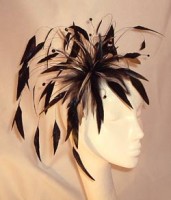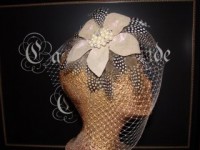Lily Hoang
https://literature.ucsd.edu/people/faculty/lhoang.html
Lily Hoang has published some books and won some awards. She is Director of the MFA in Writing at UC San Diego.
https://literature.ucsd.edu/people/faculty/lhoang.html
Lily Hoang has published some books and won some awards. She is Director of the MFA in Writing at UC San Diego.
Thus, there are only good and bad novels. The bad novel aims to please by flattering, whereas the good one is an exigence and an act of faith.
In the spirit of today, what writers, editors, journals, and presses are you most thankful for? Preferably living, but dead works too.
Whatever you do, do NOT buy this book.
[NOTE: The reviewer has just taken down his/her review from Amazon. Mysteriously. Luckily, you can still read the full text below in all its ignorant splendour! (Monday, Nov. 22, 12:25pm)]
A few years back, I attended this workshop Susan Steinberg taught, and she said something that rocked me: The only two things that are fundamental to narrative are place and conflict. Maybe I took her offhand comment too seriously, but I’ve really come to believe it. All good stories do indeed have place and conflict. They are cornerstones of narrative.
And so here I am, back at Geography Thursday, and rather than talk about place and space—two of the three big cornerstones of Human Geography, the third being scale—I will talk about neither, while discussing both.

One of our favorite writers-to-hate Jonathan Safran Foer has a new book—or sculpture, as he describes it—called Tree of Codes. Foer slices—literally—words out of his favorite book, The Street of Crocodiles by Bruno Schulz. I haven’t read the book (Foer’s not Schulz’s), or even held it in my hands, but something about the premise is striking, memorable, so memorable that it sounds familiar… But more on that later.
In an interview with Vanity Fair, Foer talks about the materiality of the book. He says he likes to break the spine, take it into the bath with him, etc. And I admire these things because I agree. I like books too. So why is it that I agree with many of his sentiments and yet dislike the idea? Is it just because it’s Foer? Ultimately, yes, there’s something about Foer that makes me doubt his authenticity. But that’s my issue, not his. And I’m sure there are tons of people who will probably piss themselves with delight at his cleverness. I’m just not one of them.
I’ve gone to a few readings over the past couple weeks, good readings, readings which—for the most part—I’ve enjoyed. But at these readings, I discovered the firm cliché that I inhabit and perpetuate: the nervous writer, fraught with agoraphobia and insecurity.
I’m a nervous person, yes. I’m an anxious person, naturally. And I’m insecure, obviously. In most social situations where the social circle is greater than three in number (myself included), I perform the role of quirky, smart, anxious writer. I make myself smaller—usually by sitting with my legs under me, my body squeezed into a tight, strange shape. When I speak, I speak either too gregariously—making bold statements about this or that, generally unsubstantiated by anything but my own opinion and a few writers/thinkers I can quote with ease, old stand-bys like Nabokov or Kafka, Adorno or Bataille, if I’m feeling particularly insecure, I’ll go with Benjamin or Baudrillard or Baudelaire, people who make me seem smart—or I mumble to the point of inaudibility.
 I went to a party a few weeks back, and a friend of mine had on the most dazzling head garment. Every time I looked at her head, I was fascinated. And still, I was taken aback when I learned its name: the fascinator. The double entendre is complete in the fact that it both fascinates and is fastened. I love puns.
I went to a party a few weeks back, and a friend of mine had on the most dazzling head garment. Every time I looked at her head, I was fascinated. And still, I was taken aback when I learned its name: the fascinator. The double entendre is complete in the fact that it both fascinates and is fastened. I love puns.
Look at this fascinator to your right. Isn’t it fascinating? Couldn’t you look at this for hours? Now, imagine seeing this on a person. What could you possibly say that would be as fittingly fascinating? I would feel lost before I could even speak.
 A few weeks back, I had a conversation with the fabulous Molly Gaudry about hats. She was looking for a hat to top off (pun!) her reading “costume.” I made a plea for her to go with a birdcage with veil, which is a hot trend right now—as evidenced in their proliferation in clothing stores such as Forever 21—but she decided to go a hat with more pizzazz.
A few weeks back, I had a conversation with the fabulous Molly Gaudry about hats. She was looking for a hat to top off (pun!) her reading “costume.” I made a plea for her to go with a birdcage with veil, which is a hot trend right now—as evidenced in their proliferation in clothing stores such as Forever 21—but she decided to go a hat with more pizzazz.
But these two conversations made me think more about hats.